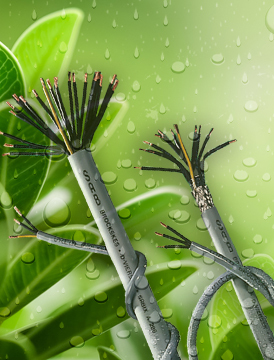FAQs About Low-Smoke and Zero-Halogen Cables
Sometimes, the choice between low-smoke or zero-halogen cables versus conventional cables isn’t quite clear. Without a doubt, low-smoke or zero-halogen cables are safer since they are designed to avoid the emission of dangerous gasses or thick smoke in the event of a fire. However, conventional cables with polyvinyl chloride (PVC) insulation and jacketing have their place in many applications, especially those with minimal risk to human safety. If you have the luxury of choosing between halogen-free and conventional cables for your application, you may be undecided as to whether halogen-free cables can satisfy your needs. This blog post will answer some common questions you may have about halogen-free cables, and it will also introduce you to a new line of halogen-free cables made with sustainability in mind.


Sometimes, the choice between low-smoke or zero-halogen cables versus conventional cables isn’t quite clear. Without a doubt, low-smoke or zero-halogen cables are safer since they are designed to avoid the emission of dangerous gasses or thick smoke in the event of a fire. However, conventional cables with polyvinyl chloride (PVC) insulation and jacketing have their place in many applications, especially those with minimal risk to human safety. If you have the luxury of choosing between halogen-free and conventional cables for your application, you may be undecided as to whether halogen-free cables can satisfy your needs. This blog post will answer some common questions you may have about halogen-free cables, and it will also introduce you to a new line of halogen-free cables made with sustainability in mind.

 nikhil
nikhil 





